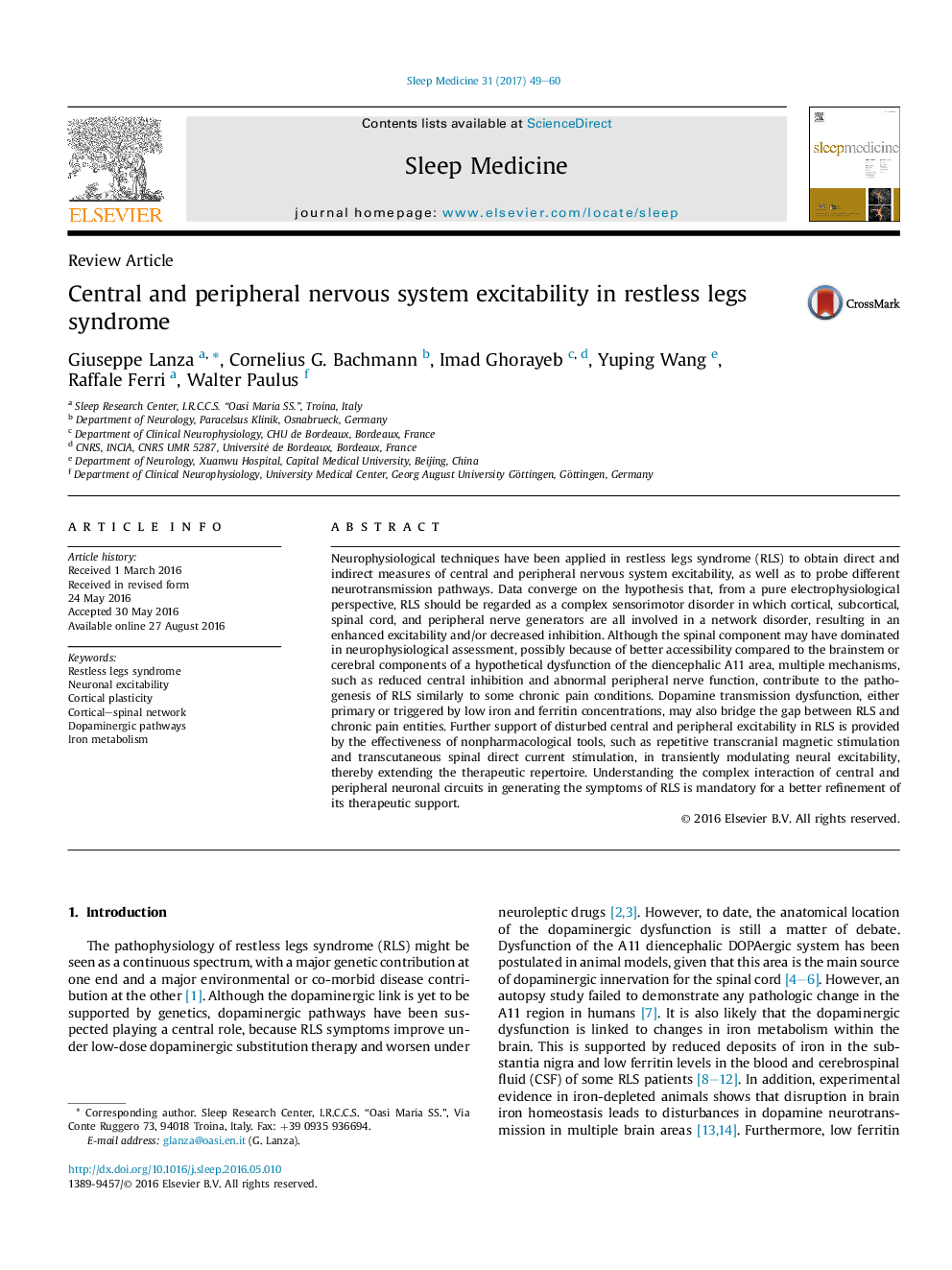| کد مقاله | کد نشریه | سال انتشار | مقاله انگلیسی | نسخه تمام متن |
|---|---|---|---|---|
| 5643787 | 1586478 | 2017 | 12 صفحه PDF | دانلود رایگان |
- Restless legs syndrome (RLS) should be regarded as a complex neurophysiological network disorder.
- Electrophysiology can probe the excitability and indirectly the neurochemistry of RLS.
- Cortical-spinal generators are likely hyperexcitable and/or less inhibited in RLS.
- Neurophysiology can contribute to the deciphering of RLS pathophysiology.
Neurophysiological techniques have been applied in restless legs syndrome (RLS) to obtain direct and indirect measures of central and peripheral nervous system excitability, as well as to probe different neurotransmission pathways. Data converge on the hypothesis that, from a pure electrophysiological perspective, RLS should be regarded as a complex sensorimotor disorder in which cortical, subcortical, spinal cord, and peripheral nerve generators are all involved in a network disorder, resulting in an enhanced excitability and/or decreased inhibition. Although the spinal component may have dominated in neurophysiological assessment, possibly because of better accessibility compared to the brainstem or cerebral components of a hypothetical dysfunction of the diencephalic A11 area, multiple mechanisms, such as reduced central inhibition and abnormal peripheral nerve function, contribute to the pathogenesis of RLS similarly to some chronic pain conditions. Dopamine transmission dysfunction, either primary or triggered by low iron and ferritin concentrations, may also bridge the gap between RLS and chronic pain entities. Further support of disturbed central and peripheral excitability in RLS is provided by the effectiveness of nonpharmacological tools, such as repetitive transcranial magnetic stimulation and transcutaneous spinal direct current stimulation, in transiently modulating neural excitability, thereby extending the therapeutic repertoire. Understanding the complex interaction of central and peripheral neuronal circuits in generating the symptoms of RLS is mandatory for a better refinement of its therapeutic support.
Journal: Sleep Medicine - Volume 31, March 2017, Pages 49-60
